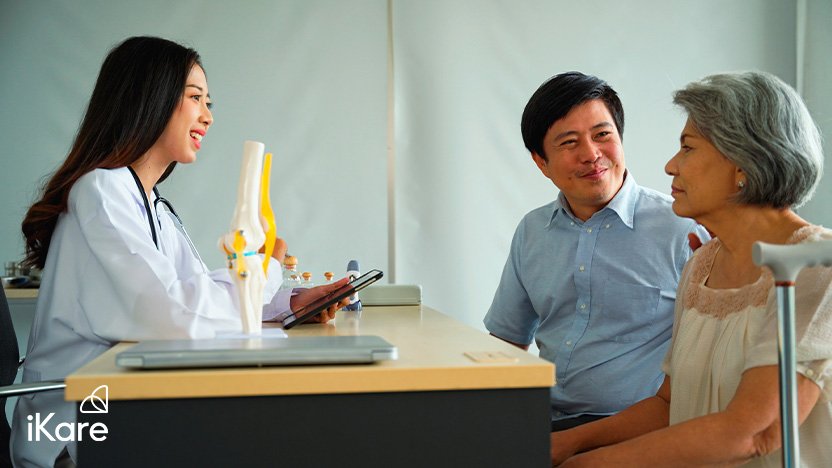
As we age, we may find ourselves struggling to complete daily tasks that once seemed simple. Activities of Daily Living (ADLs) and Instrumental Activities of Daily Living (IADLs) are terms used to describe these tasks. ADLs are basic self-care tasks such as eating, dressing, and bathing. On the other hand, IADLs are more complex tasks such as managing finances, using transportation, and preparing meals. But how does understanding the differences between the two concepts play an important role in a patient’s recovery after a life-changing illness or injury?
iKare is a leading provider of home nursing services in Singapore, and we delve into some reasons why understanding the differences between ADLs and IADLs is crucial.
Facilitating communication with medical providers

When communicating with medical providers, it is crucial to articulate the patient’s level of functioning accurately. This helps medical providers have a better understanding of the patient’s overall health status and tailor their recommended treatment plans accordingly. For example, if a patient is having difficulty with ADLs, such as bathing or dressing, they may require more intensive assistance from home care services or family members. By articulating the patient’s level of functioning, medical providers can ensure that appropriate measures are taken to address their specific needs.
Helps determine recommendations for in-home assistance recommendations

Depending on the patient’s level of functioning, they may require assistance with ADLs, IADLs, or both. By identifying the specific tasks the patient needs assistance with, healthcare providers can make more informed recommendations for in-home assistance.
Suppose a patient can perform ADLs independently but needs help with IADLs such as meal preparation and housekeeping. Their medical provider may recommend caregiver services to assist with these tasks. Alternatively, if a patient has difficulty with both ADLs and IADLs, a more comprehensive in-home care plan may be necessary. This could involve a team of healthcare professionals, including home care services and therapists, to provide a more holistic approach.
Supports clinicians and family members in identifying the next steps
Equipped with an understanding of these differences, clinicians and family members can better identify the next steps needed to support individuals with different levels of independence. By doing so, potential areas of concern or risk can be identified, which can be invaluable in preventing accidents and ensuring the individual’s safety. For instance, if an individual struggles with ADLs, they may be at a higher risk for falls or other injuries due to mobility or balance issues. Recognising this risk empowers clinicians and family members to take appropriate measures and prevent future accidents.
Learn more: Introduction to Dementia | iKare
Taking the time to understand the nuances of ADLs and IADLs can support healthcare providers, home caregivers, and family members in ensuring that patients receive the most appropriate care and support.
Searching for home care services in Singapore? At iKare, we recognise the importance of understanding these distinctions to provide customised care to each individual. That is why our team of skilled professionals are trained to assess the specific needs of each client and provide adequate support. Reach out to learn how we can support you or your loved one in maintaining independence and improving the quality of life today.
